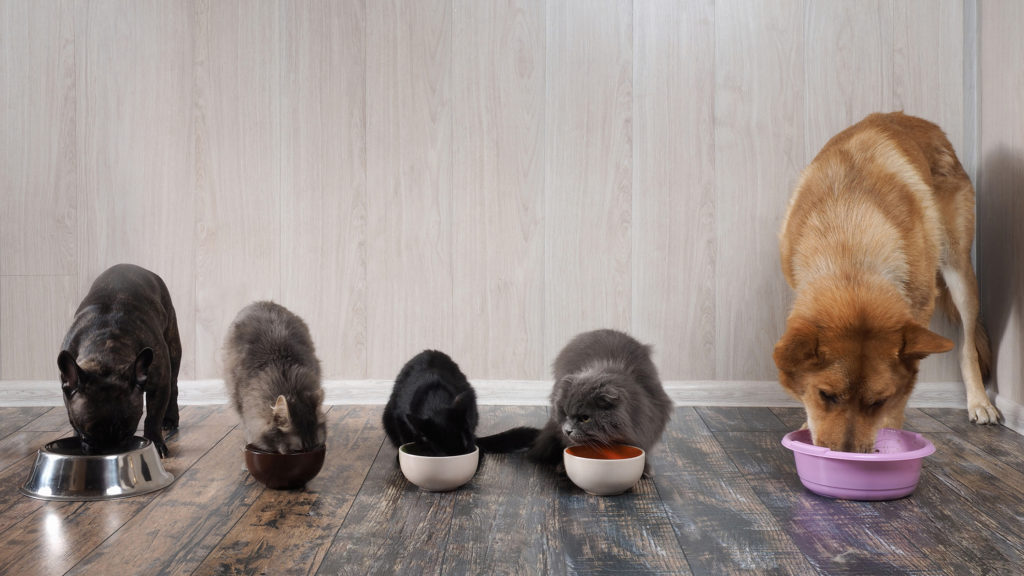Dinnertime! Everyone comes running at once. How are you going to make sure that the cats get their share when dogs are typically so much bigger?
First of all, please don’t feed them the same food, because they have completely different biological needs. Cats are obligate carnivores. They must have meat and fat – lots of it. But dogs are more like humans. They need a balanced diet. Dog food and cat food are formulated very differently. Can they taste each other’s food? Yes, a taste won’t hurt, but regular feeding of cat food, for example, will pack extra pounds on a dog, and a constant diet of dog food for a cat would seriously hurt the kidneys and other organs.
When you feed them together, be there to make sure they eat their own meals and to monitor how well the submissive guys are eating. A poor appetite is perhaps the first indication of not feeling well or of having dental issues.
Keep everybody out of the kitchen if at all possible, feeding them in an adjacent area such as a breakfast nook or mudroom, so they won’t get into the habit of crowding the kitchen expectantly every time you walk in to cook.
Maintaining routine feeding times and rituals such as preparing meals and feeding them always in the same spot, in the same order and in the same manner, helps them to anticipate and wait patiently. Having their own mat – their own ‘parking spot’– helps them to get positioned and wait for their meal. Routine assures them that no one will be forgotten, so they should sit patiently during preparation. You may consider feeding the dogs first, because they find it more difficult to sit still.
Multiple dogs can be so lively that the family cats could fear getting trampled. A baby gate can separate them while eating, but having to maneuver around it makes mealtime more difficult for you.
Feeding the pets in shifts might be the answer here. For example, let your dogs play in the backyard while your cats eat and you prepare the dogs’ bowls. When the dogs come back in, their bowls will be ready, and everyone will have had a relaxed meal.
Take advantage of height if possible. If your cat is nervous at mealtime, provide a step stool beside a chair, to allow even an older cat to hop up onto a table or counter for meals, while your dogs dine at floor level.
Leaving dry food out for any of them to eat at will is the animal version of a cruise buffet — not the best way to stay fit. Making mealtimes a routine thing gets everyone used to eating a full meal and then metabolizing it more efficiently.
When your pets learn to trust each other and cooperate at mealtime, they will bond better overall.

